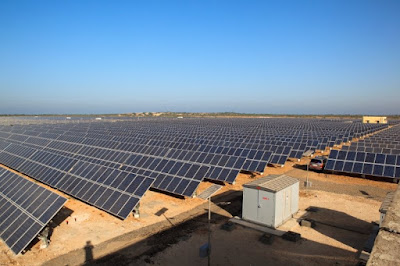Why Solar Power is the Best Option to Offset Carbon
Why Solar Power is the Best Option to Offset Carbon While there are a few renewable energy options to be had to Australian home entrepreneurs and businesses, solar power is considered through the experts to offer the most cost effective and viable option. Because of this , it has received comprehensive funding support from the government for countless years already, and the pricing structure has continued to get more favourable each yr as manufacturing costs of residential solar panels fall.
Why Solar Power is the Best Option to Offset Carbon If you are needing to free yourself from rising electricity costs in addition to do your fair talk about in carbon reduction then here are the key reason why you should choose sun photovoltaic panels. Prices of solar PV modules have fallen rapidly the last couple of years, and will soon reach nys of grid parity in numerous regions of Australia. A standard 1. 5 KW solar PV system cost about $3000 (national average) at this time if you are qualified to receive the government rebates. This figure is almost 50 % of what it was five in the past and experts in the profession believe that solar panels will become even cheaper.
Waiting for further price reductions before making the decision to buy is false economy though; the existing government rebates are reducing annually, and will finish by 2014, so your out of pocket price is likely to remain quite stable over the next couple of years. And your power bill will continue to move up in the meantime!
Although the premium feed in tariff (PFiT) scheme for residential solar panels is nearing its end or already ended in numerous states (Queensland is this notable exception), previously qualified systems will benefit greatly on the financial return the high quality rate offers for 15 years. Why Solar Power is the Best Option to Offset Carbon And even with simply a standard FiT contract, which should continue being available indefinitely to brand-new applicants, an average system will probably pay for itself within concerning 8 years.
Solar hot water discounts have remained consistent in most areas though, and qualified system entrepreneurs can receive financial assistance as much as $1000 depending on which state yourr home is in.
Currently the highest efficiency rating that your solar panel system has approximately 18%, which is relatively high to get a rooftop system, and greatly increased from the concepts available even 2 in the past. Although the panels' efficiency gradually decreases in recent times it is still expected to offset quite a lot of carbon and reduce energy bills for 25 years Why Solar Power is the Best Option to Offset Carbon.
Once the system is usually installed your responsibility nearly completely ends there, residential solar panels are durable and tough in nature therefore it won't require any pricey maintenance. Just a regular cleaning will suffice to help keep the panels absorbing their maximum number of sunlight.
A typical Australian residence has enough roof space to allow for an effectively sized solar pv system but not adequate open spaces for residential wind turbines to be installed. Solar can be quiet and won't annoyed your neighbours! This fact is amongst the primary reasons why solar is favored for the reason that most viable residential renewable energy option near you.
Why Solar Power is the Best Option to Offset Carbon Australia is home to some of the finest researchers and scientists within the solar field, and as a result of the continued financial support being delivered from the government and private investorsfor research and development, there are important breakthroughs going down in both the technology of residential solar panels themselves and the producing process.
This will always make it cheaper plus much more viable for commercial and residential applications make use of solar and other renewable energy options to create their electricity rather than coal sources. Experts believe that together with continued research and development the continent will reach national grid parity between the expense of solar and fossil fuel produced electricity within many years, and in some areas this has already occurred.
